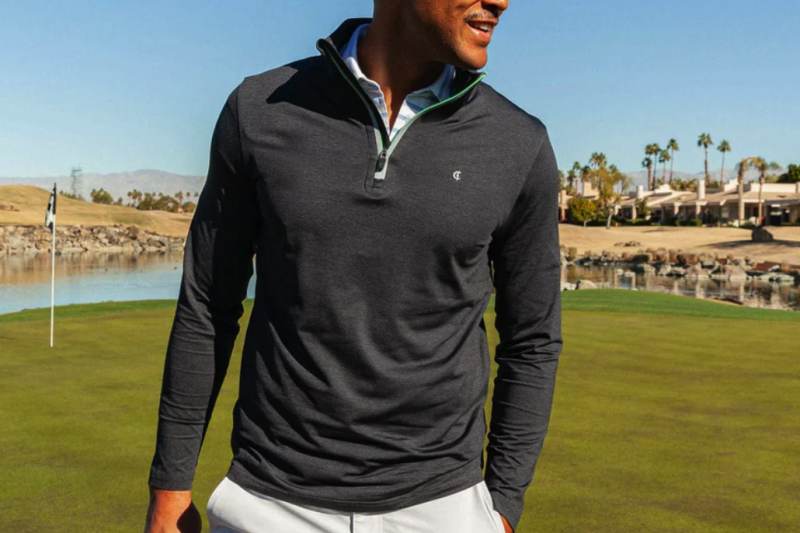For more than four decades, brands have marketed cooling clothing to consumers by touting how well it wicks away moisture. In fact, when a major athletic brand introduced a new line of wicking golf apparel with ultraviolet (UV) protection in the early ’90s, it set a new standard for moisture management. Other brands soon adopted wicking technology, and in the early 2010s, wet “snap” towels became popular.
But while moisture management is important, wicking fabric really just moves moisture around. What if fabric could draw away heat and reduce skin temperature?
In recent years, there has been a proliferation of new cooling fabric technologies. Like predecessors from the ’90s, most wick and dry well. Some use chemical finishes to achieve a cooling effect, which diminish and wash out over time. Some must be wet to activate the cooling effect, which might be sufficient for the gym or mowing the lawn, but isn’t practical for the office or meeting friends for dinner.
To combat these problems and more, cooling fabric innovator brrr° is advancing the category by using natural cooling minerals, active wicking and rapid drying technologies to create a “Triple Chill Effect” scientifically proven to lower skin temperature by several degrees.
brrr° continuously draws heat away from the body, so it keeps cooling the longer you wear it. In independent lab tests, brrr° consistently outperforms other cooling products in cooling, wicking and drying tests under FTTS—a group of standardized tests that can be performed on fabrics to check their cooling, wicking, drying properties and more—and the American Association of Textile Chemists and Colorists (AATCC) standards.
Tom Brady is a fan
In our post-pandemic world, the No. 1 thing consumers want in their clothing is comfort, and 70 percent say they plan to dress more casually from now on, according to a survey by NPD and research by The Wall Street Journal.
Major brands—including BRADY Brand by Tom Brady, Adidas, Jack Wolfskin, Reebok, Greyson, Southern Tide and Vineyard Vines—are already using brrr° cooling technology to elevate their apparel.
“I’ve been living in this thing recently, and it actually lowers your body temperature. Which I need here. It’s perfect for Tampa,” Brady said in a video posted to his Facebook page in 2022. “Listen, I put them to the test this past summer and it made all the difference.”
Consumers also rave about the cooling comfort of apparel made with brrr° fabric. Southern Tide has expanded brrr° fabric to more men’s, women’s and youth clothing, including their bestselling men’s brrr°-die Performance Short.
“Best shorts I have ever owned. They are light and comfortable,” said Ben W., a Southern Tide customer, in an online review.
Sustainability and universal standards
Many companies are setting sustainability goals to reduce their carbon footprint by deepening their recycling programs, minimizing virgin materials usage, switching to replenishable materials and pursuing more eco-friendly products and production methods.
brrr° offers recycled yarns that are Global Recycled Standards (GRS) Certified, which divert material from landfills and reduce the need for virgin material. Because brrr° technology is permanently embedded in the structure of the yarn, it never fades or washes out like the chemical sprays and coatings used by other companies.
As consumers seek better performance from their clothing, there is a pressing need for a universal standard to define the “cooling” category and move toward common testing methods to support cooling fabric claims—similarly to the way UPF sun protection is measured.
brrr° relies on globally recognized independent labs to test its fabrics and prove the science behind its cooling properties.
Adopting universal cooling standards would also reduce confusion among consumers and enhance willingness to buy and try new products. That could encourage more retailers to offer apparel made with performance fabrics that keep consumers cool and comfortable and propel new growth in the category for decades to come.
This article was written by Mary Jane Credeur, founder and principal at The Credeur Group.
To learn more about brrr° cooling fabric technology, visitbrrr.com.
Read the full Sourcing Journal article here.



